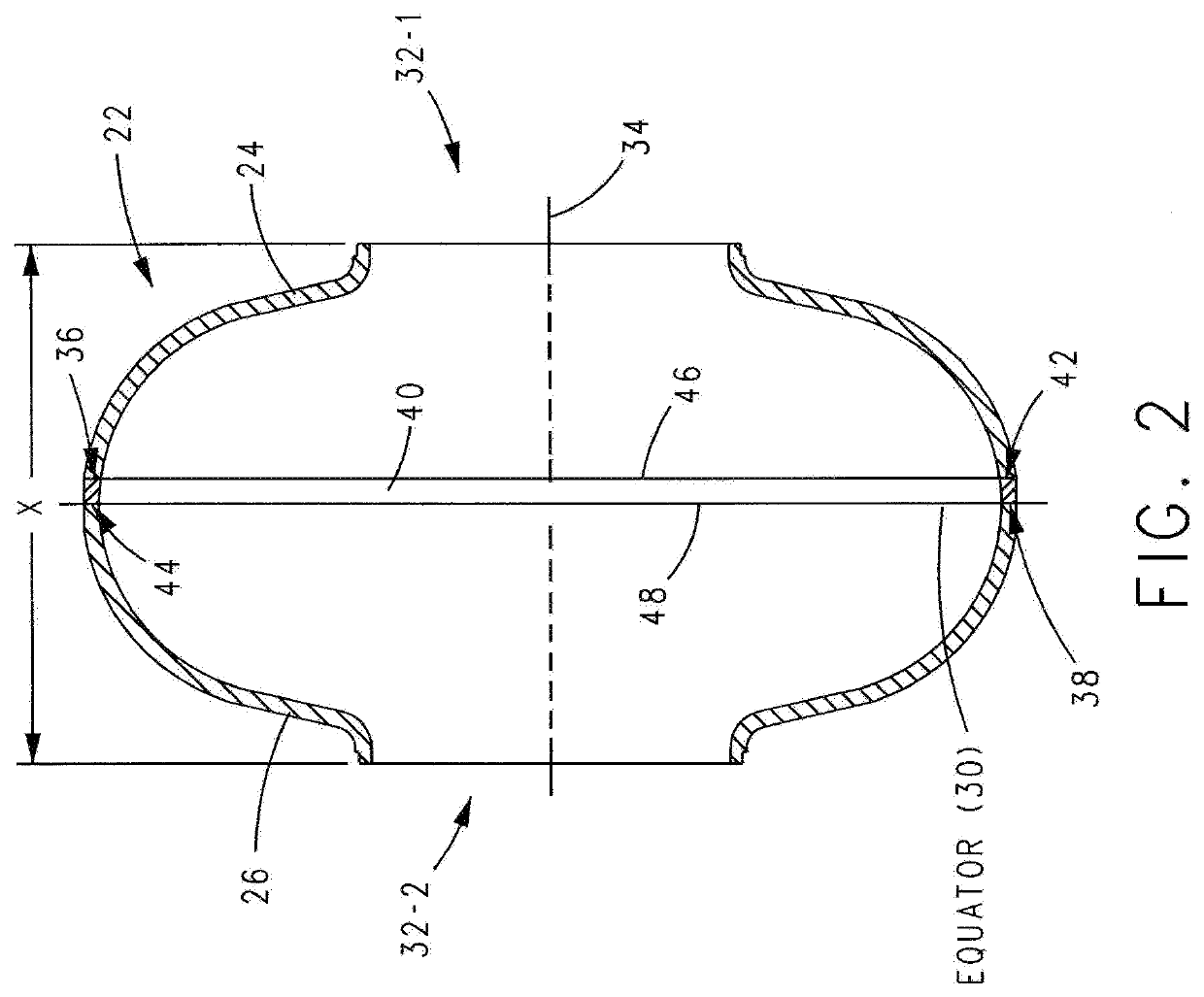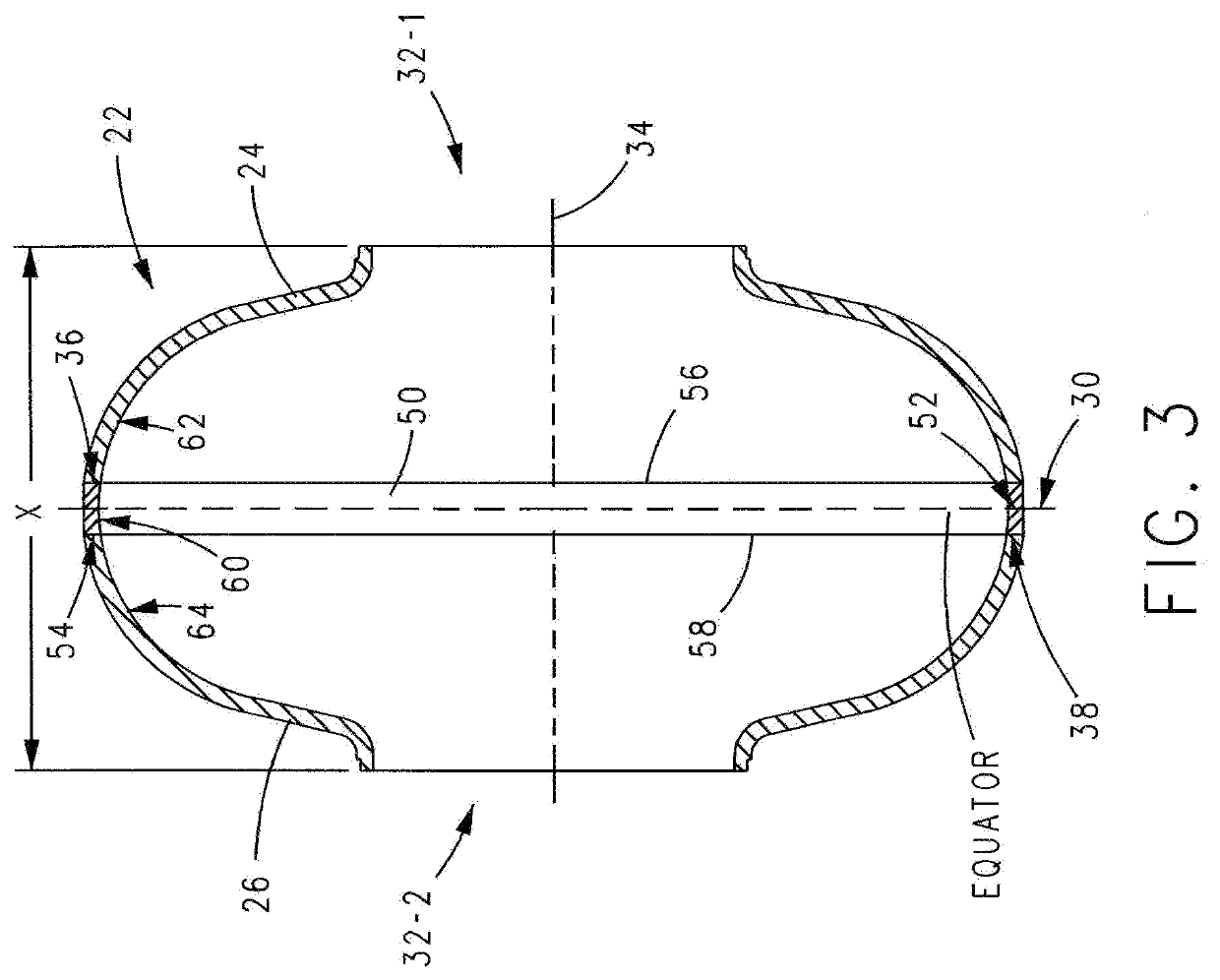Superconducting resonating cavity with laser welded seam and method of formation thereof
a superconducting radio frequency and laser welding technology, applied in the direction of waveguide type devices, welding/soldering/cutting articles, manufacturing tools, etc., can solve the problems of superconducting interior surface performance limits, x-ray production, and cavity heating, etc., to achieve better treatment of inner surface
- Summary
- Abstract
- Description
- Claims
- Application Information
AI Technical Summary
Benefits of technology
Problems solved by technology
Method used
Image
Examples
Embodiment Construction
[0034]Various non-limiting examples will now be described with reference to the accompanying figures where like reference numbers correspond to like or functionally equivalent elements.
[0035]For purposes of the description hereinafter, the terms “end,”“upper,”“lower,”“right,”“left,”“vertical,”“horizontal,”“top,”“bottom,”“lateral,”“longitudinal,” and derivatives thereof shall relate to the example(s) as oriented in the drawing figures. However, it is to be understood that the example(s) may assume various alternative variations and step sequences, except where expressly specified to the contrary. It is also to be understood that the specific example(s) illustrated in the attached drawings, and described in the following specification, are simply exemplary examples or aspects of the invention. Hence, the specific examples or aspects disclosed herein are not to be construed as limiting.
[0036]The Background having thus described a prior art cell 4 and a SRF cavity 2 where one or a numbe...
PUM
| Property | Measurement | Unit |
|---|---|---|
| latitude | aaaaa | aaaaa |
| width | aaaaa | aaaaa |
| width | aaaaa | aaaaa |
Abstract
Description
Claims
Application Information
 Login to View More
Login to View More - R&D
- Intellectual Property
- Life Sciences
- Materials
- Tech Scout
- Unparalleled Data Quality
- Higher Quality Content
- 60% Fewer Hallucinations
Browse by: Latest US Patents, China's latest patents, Technical Efficacy Thesaurus, Application Domain, Technology Topic, Popular Technical Reports.
© 2025 PatSnap. All rights reserved.Legal|Privacy policy|Modern Slavery Act Transparency Statement|Sitemap|About US| Contact US: help@patsnap.com



